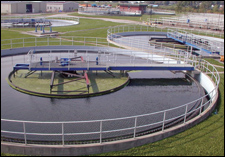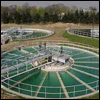 The need for disinfection in water and wastewater treatment processes is gathering further steam as rapid industrialisation and urbanisation call for more extensive water reuse. Moreover, stringent legislation is driving the water and wastewater disinfection systems market. To fully leverage the market enormous growth potential, particularly in developing regions, companies will need to provide cost-effective solutions.
The need for disinfection in water and wastewater treatment processes is gathering further steam as rapid industrialisation and urbanisation call for more extensive water reuse. Moreover, stringent legislation is driving the water and wastewater disinfection systems market. To fully leverage the market enormous growth potential, particularly in developing regions, companies will need to provide cost-effective solutions.
Globally, Europe had the highest market share in 2012, followed by the Americas and Asia-Pacific. While the diversion of water utility funds in the Americas is projected to slacken growth in the region, APAC will emerge as a powerhouse due to rapid population expansion, intensifying water demand, and high industrialisation rates.
The global water and wastewater disinfection systems market earned revenues of $1.94 billion in 2012 and estimates this to reach $2.96 billion in 2019, says new analysis from Frost & Sullivan.
“Numerous water-specific directives are raising the bar on water quality standards,” noted Frost & Sullivan’s Energy & Environmental Research Analyst Vandhana Ravi. “Legislative enforcement, together with public health and safety concerns linked to poor quality drinking water, will reinforce the adoption of water and wastewater disinfection systems.”
Rapid industrialisation and urbanisation are highlighting the urgent need for water reuse in several countries. Disinfection, in this context, is regarded as an excellent secondary treatment step in the water reuse cycle, which can yield water for use in non-food crop irrigation and industrial cooling.
“The trend of water reuse and stringent disinfection practices, especially in water intensive and water critical industries such as power, food and beverage and pharmaceuticals, is acting as a major driver for the water and wastewater disinfection systems market,” added Vandhana Ravi. “It will have a profound impact on market prospects over the next five-seven years.”
Despite the widespread acceptance that disinfection is vital to managing scarce water resources, high overall expenditure, including capital investments, running costs and service and maintenance outlays, are acting as a major restraint to uptake. This is particularly the case in developing and poorly developed countries.
“Developing nations prefer low-cost solutions, even if the quality of the product is compromised,” cautioned Vandhana Ravi. “This is demonstrated by the fact that gas chlorination, despite its hazardous nature, still dominates the APAC and Middle East and Africa markets, even while the Americas and Europe shift towards sustainable solutions.”
Municipalities and government entities will, therefore, have focus on raising awareness about quality issues and sustainable alternatives. Companies, on their part, need to design high-performance, cost-effective disinfection solutions.











